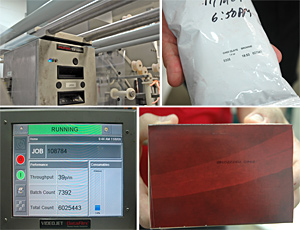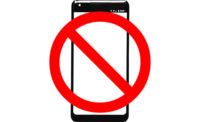
The company packages a wide variety of dry food products, including seasonings, spices and mixes, that require flexible packages, such as foil, clear plastic film or opaque pouches. In the past, Wixon used hot stamping to put custom information, including customer logos and product names, on packaging. Hot stamping required having printing plates created by an outside vendor, and changes were both expensive and time consuming. Hot stamping was also inconvenient because the heat transfer could destroy some substrates.
The increased customer demand for customization and shorter lead times led Rob Marlette, Wixon maintenance manager, to investigate available printing solutions from Videojet. Marlette developed a list of criteria for the new printers he sought: The printers had to be capable of printing logos and be easy to set up and troubleshoot. In addition, it was critical the printers be networked for efficient message management.
“With the hot stamp printers, we had to go from printer to printer and manually set up jobs,” Marlette says. “We would load in a plate and screw it on, and the process was very cumbersome. We were looking for new printers that would allow us to expand our capabilities to our customers to offer them the ability to print what they wanted on packaging and make changes quickly if necessary.”
Wixon chose DataFlex thermal transfer overprinters, and CLARiNET and CLARiSOFT packaging coding management (PCM) software from Videojet Technologies Inc. to enable variable data coding on its variety of packaging substrates. The solutions helped Wixon meet increased customer demand for customization, shorten lead times to provide packaged products to customers and increase the speeds of its production lines.
With the PCM software, Wixon’s line supervisors use a network computer to enter required expiration dates, lot codes, time stamps, logos or other necessary information specific to a customer’s packaging. The customer can receive a preview of the information to approve, and then it is loaded onto a network directory accessed by Wixon’s manufacturing department. From the network, the file is sent to a specific printer, making it easy for the operator to select information to be coded from an approved list. The supervisor can use a computer to make last-minute customer changes.
Preloading information onto the network has made it extremely easy for Wixon’s 12 line operators to set up the printers; setup takes less than 10 seconds because the printer interface is extremely intuitive.
“Our operators simply have to know which product they are running to start a project, and then the printer prompts them to verify any other variable data required,” Marlette says. “Now we can print anything our customers want, and they are extremely impressed with the short lead times. It has become almost standard for our customers to expect that they can put anything they want on a flexible package.”
Wixon also found the DataFlex printers could keep up with the company’s two-shift operations. Some days, the printers run for 16 consecutive hours and continue to provide the clear codes and uptime on which Wixon relies.
“Today, we can run anywhere from 20 to 70 packages per minute,” says Marlette. “This is up to 40 packages per minute more than we used to be capable of with our old process, which represents a 133 percent increase. We can basically set the printers and forget them, which is exactly what you want to happen on a packaging line,” he concludes.
For more information, Theresa DiCanio, Videojet Technologies, 800-843-3610.